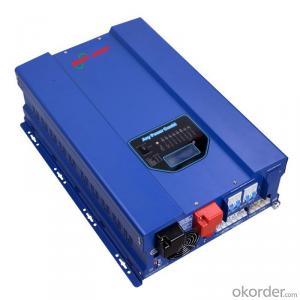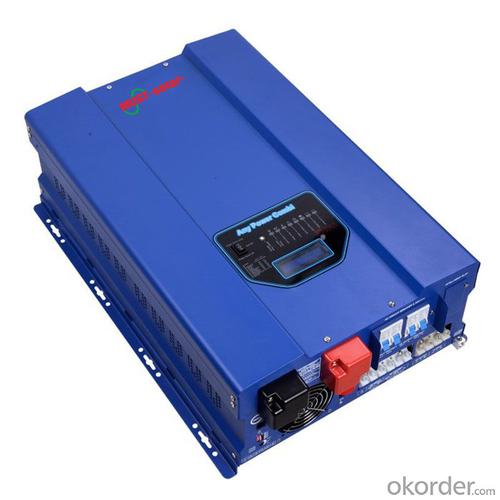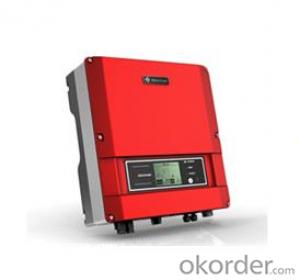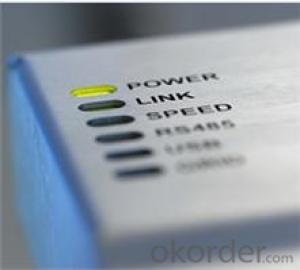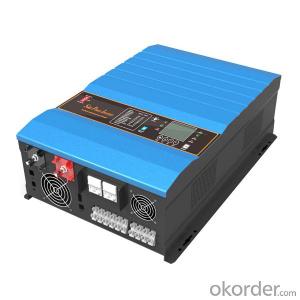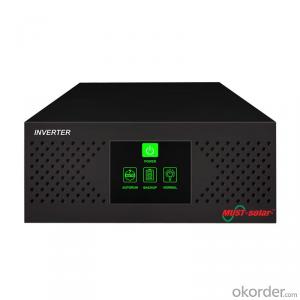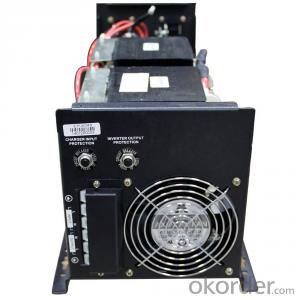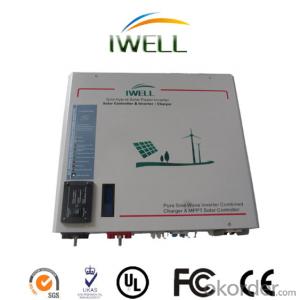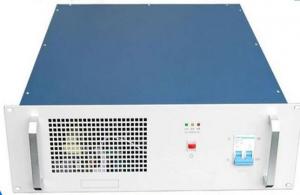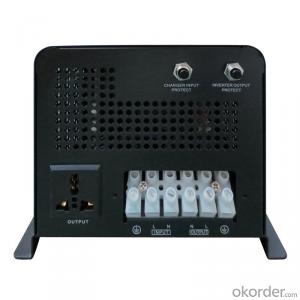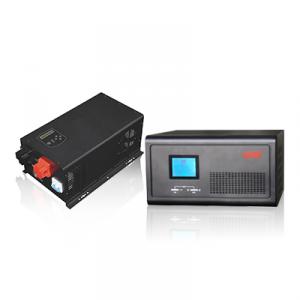Solar Inverter 1kva Pure Sine Wave Inverter Low Frequency EP3000 Series 8kw-12kw
- Loading Port:
- China main port
- Payment Terms:
- TT OR LC
- Min Order Qty:
- 10 pc
- Supply Capability:
- 1000 pc/month
OKorder Service Pledge
OKorder Financial Service
You Might Also Like
Features:
. Smart Remote Control (RMT)
. Battery Temperature Sensor (BTS)
. Automatic Generator Starting (AGS)
. Support Solar Panel with MPPT Function
. Designed to Operate under Harsh Environment
. DC Start & Automatic Self-Diagnostic Function
. Compatible with Both Linear & Non-Linear Load
. Easy to Install & Easy to Operate & Easy to Solve
| Model | 8.0KW | 10.0KW | 12.0KW | |
| Inverter Output | Continuous Output Power | 8.0KW | 10.0KW | 12.0KW |
| Surge Rating(20ms) | 24.0KW | 30.0KW | 36.0KW | |
| Output Waveform | Pure Sine wave/Same as input(Bypass Mode) | |||
| Nominal Efficiency | >88%(Peak) | |||
| Line Mode Efficiency | >95% | |||
| Power Factor | 0.9-1.0 | |||
| Nominal Output Voltage rms | 100-110-120Vac / 220-230-240Vac | |||
| Output Voltage Regulation | ±10% RMS | |||
| Output Frequency | 50Hz ± 0.3Hz/60Hz ± 0.3Hz | |||
| Short Circuit Protection | Yes( 1sec after fault ) | |||
| Typical transfer Time | 10ms(Max) | |||
| THD | < 10% | |||
| DC Input | Nominal Input Voltage | 12.0Vdc | ||
| ( *2 for 24Vdc, *4 for 48Vdc) | ||||
| Minimum Start Voltage | 10.0Vdc | |||
| Low Battery Alarm | 10.5Vdc / 11.0Vdc | |||
| Low Battery Trip | 10.0Vdc / 10.5Vdc | |||
| High Voltage Alarm | 16.0Vdc | |||
| Low Battery voltage recover | 15.5Vdc | |||
| Idle Consumption-Search Mode | < 25 W when Power Saver On | |||
| Charger | Output Voltage | Depends on battery type | ||
| Charger Breaker Rating | 40A | |||
| Max Charge Power Rate | 1/3 Rating Power | |||
| Battery Initial Voltage for Start Up | 10-15.7V for 12V( *2 for 24V, *4 for 48V) | |||
| Over Charge Protection Shutdown | 15.7V for 12V (*2 for 24V, *4 for 48V) | |||
| Remote Control | Yes(Optional) | |||
| Bypass & Protection | Input Voltage Waveform | Sine wave (Grid or Generator) | ||
| Nominal Voltage | 230Vac | |||
| Max Input AC Voltage | 150VAC For 120Vac LV Mode;300VAC For 230Vac HV Mode; | |||
| Nominal Input Frequency | 50Hz or 60Hz (Auto detect) | |||
| Low Freq Trip | 47±0.3Hz for 50Hz, 57±0.3Hz for 60Hz | |||
| High Freq Trip | 55±0.3Hz for 50Hz, 65±0.3Hz for 60Hz | |||
| Overload protection(SMPS load) | Circuit breaker | |||
| Output Short circuit protection | Circuit breaker | |||
| Bypass breaker rating | 50A | 63A | 63A | |
| Transfer switch rating | 80amp for UL | |||
| Bypass without battery connected | Yes (Optional) | |||
| Max bypass current | 80amp | |||
| Solar Charger (Optional) | Rated Voltage | 12Vdc / 24Vdc / 48Vdc | ||
| Solar Input Voltage Range | 15-30Vdc / 30-55Vdc / 55-100Vdc | |||
| Rated Charge Current | 40 ~ 60A | |||
| Rated Output Current | 15A | |||
| Self Consumption | < 10mA | |||
| Bulk Charge(Default) | *2 for 24Vdc, *4 for 48Vdc | |||
| Floating Charge(Default) | ||||
| Equalization Charge(Default) | ||||
| Over Charge Disconnection | ||||
| Over Charge Recovery | ||||
| Over Discharge Disconnection | ||||
| Over Discharge Reconnection | ||||
| Temperature Compensation | ||||
| Ambient Temperature | 0 ~ 40°C(Full load) 40 ~ 60°C(Derating) | |||
| Mechanical Specifications | Mounting | Wall Mount | ||
| Inverter Dimensions(L*W*H) | 588*415*200mm | |||
| Inverter Weight(Solar Chg)KG | 60+2.5 | 66+2.5 | 70+2.5 | |
| Shipping Dimensions(L*W*H) | 750*520*310mm | |||
| Shipping Weight(Solar Chg)KG | 62+2.5 | 68+2.5 | 72+2.5 | |
| Display | Status LEDs / Status LEDs+LCD | |||
| Standard Warranty | 1 Years (Optional) | |||
Warranty
provides a 1~3 year limited warranty (“Warranty”) against defects in materials and workmanship for its Uninterruptible power supply, Power inverter/chargers, Solar charge controllers, Battery Products (“Product”).
The term of this Warranty begins on the Product(s) initial purchase date, or the date of receipt of the Product(s) by the end user, whichever is later. This must be indicated on the invoice, bill of sale, and/or warranty registration card submitted to MUST-Solar. This Warranty applies to the original MUST-Solar Product purchaser, and is transferable only if the Product remains installed in the original use location.
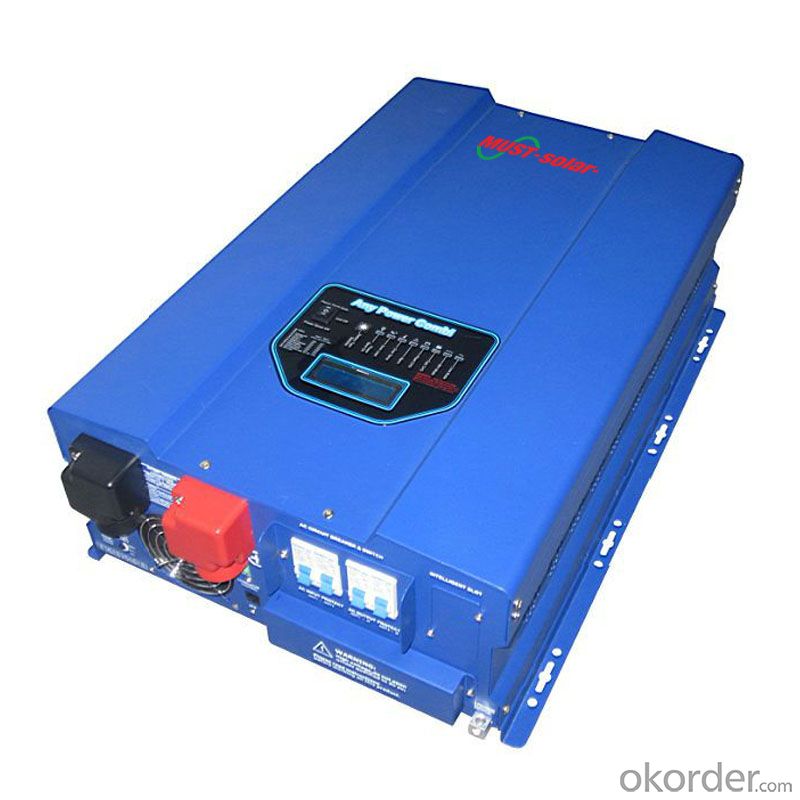
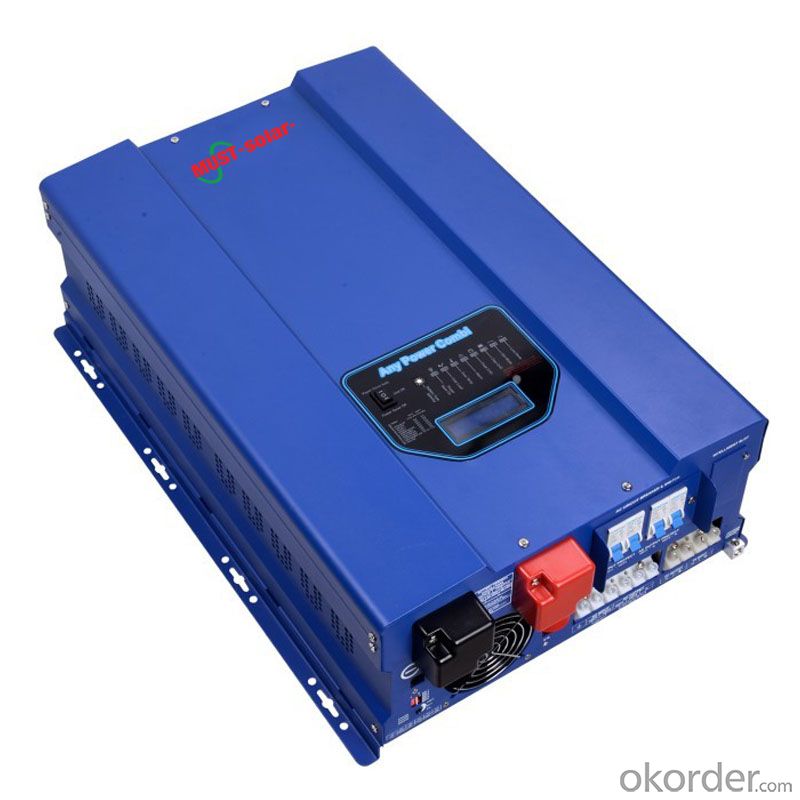
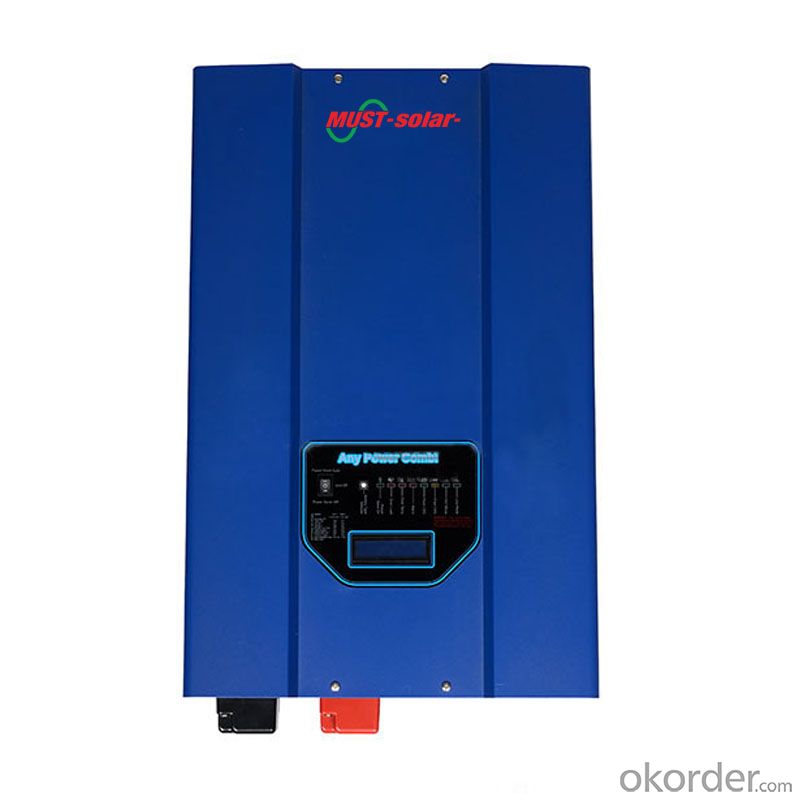
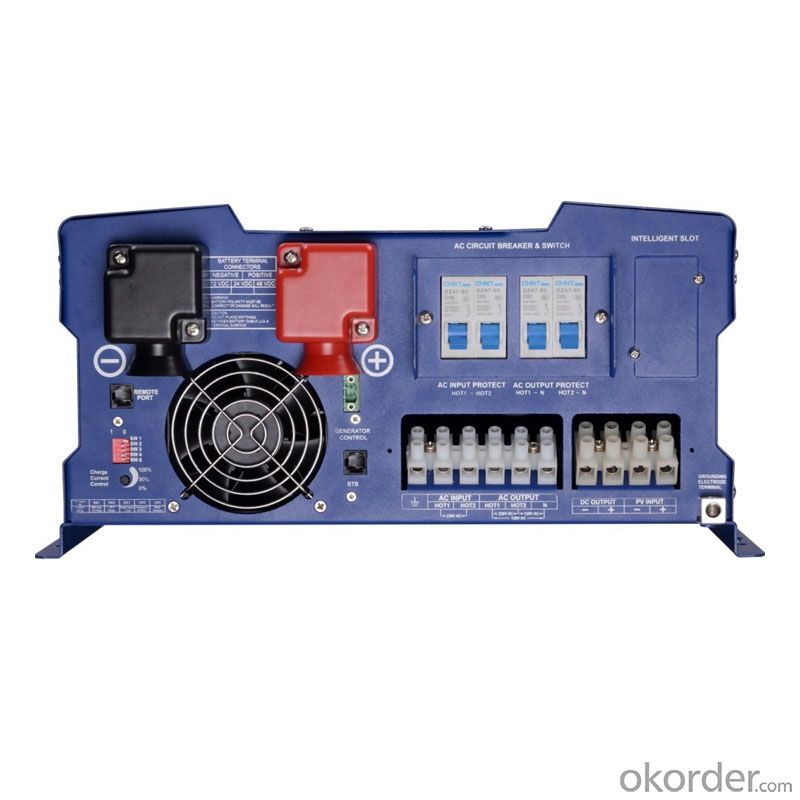
FAQ
1. How do I decide which system is right for me ?
For protection from long outages, include a generator or solar panels in your Must solar system. Shorter outages can be handled by a battery-only system.
2. Where my system will be installed ?
Must solar systems are usually wall-mounted near a home's main electrical (circuit breaker) panel.
3. How do I install my system ?
A must solar backup inverter is connected to a home electric system , we will supply detailed installation manual and videos for our customers .
- Q: Can a solar inverter be used with a solar-powered healthcare system?
- Yes, a solar inverter can be used with a solar-powered healthcare system. A solar inverter is an essential component of a solar power system as it converts the direct current (DC) produced by solar panels into alternating current (AC) that can be used to power various healthcare devices and equipment. This allows for the efficient and reliable operation of a solar-powered healthcare system, ensuring uninterrupted access to essential medical services even in remote or off-grid locations.
- Q: Can a solar inverter be installed in a residential area?
- Yes, a solar inverter can be installed in a residential area. In fact, residential areas are common locations for solar installations, including the installation of solar inverters. These inverters are responsible for converting the direct current (DC) electricity generated by solar panels into alternating current (AC) electricity that can be used by household appliances and fed back into the electrical grid. Installing a solar inverter in a residential area allows homeowners to harness the power of solar energy and reduce their reliance on traditional electricity sources.
- Q: How does a solar inverter convert DC power to AC power?
- A solar inverter converts DC power to AC power by utilizing a two-step process. First, it converts the DC power generated by the solar panels into a high-frequency AC current. Then, it uses a transformer to increase the voltage and shape the AC waveform to match the grid's requirements. This process allows the solar energy to be fed into the electrical grid or used directly in homes and businesses.
- Q: How does a solar inverter handle voltage unbalance in the grid?
- A solar inverter handles voltage unbalance in the grid by continuously monitoring the grid voltage levels. If it detects voltage unbalance, it adjusts the output power accordingly to maintain a balanced operation. This is achieved through internal control algorithms that ensure each phase of the grid receives the appropriate amount of power, correcting any imbalances and preventing potential damages to the solar inverter or the grid.
- Q: Do I need a special inverter for a battery storage system?
- Yes, a special inverter is required for a battery storage system. Unlike traditional solar inverters that convert DC power from solar panels into AC power for immediate use or for feeding back into the grid, a battery storage system inverter is designed to manage the charging and discharging of the batteries. It ensures that the stored energy is used efficiently and safely, and allows for backup power during grid outages.
- Q: How is a solar inverter connected to the solar panels?
- A solar inverter is connected to the solar panels through a direct electrical connection. The DC (direct current) electricity generated by the solar panels is fed into the inverter, which then converts it into AC (alternating current) electricity suitable for use in homes and businesses.
- Q: What is the role of a voltage regulator in a solar inverter?
- The role of a voltage regulator in a solar inverter is to maintain a consistent and stable output voltage despite fluctuations in the input voltage from the solar panels. It ensures that the electricity generated by the solar panels is converted and delivered to the connected devices or grid at the required voltage level, preventing any damage to the devices and optimizing the overall efficiency of the solar power system.
- Q: Can a solar inverter be connected to a home automation system?
- Yes, a solar inverter can be connected to a home automation system. This integration allows homeowners to monitor and control their solar power generation and consumption remotely through their home automation system. It provides real-time data on energy production, allows for scheduling and optimizing energy usage, and enables the automation of various appliances and devices based on solar power availability.
- Q: In a photovoltaic grid-connected project, the role of the inverter is to convert the voltage into AC 220V or 380V for the grid, since the transformer will raise the voltage again
- Connected to the grid is connected to which specific location ah? Transformer is to buy a separate, or buy inverter inside the type of transformer? For example, Sweden's 15KW and 30KW grid roof projects, the roof, for example, more remote to be transported to other electricity.
- Q: Can a solar inverter be used with a hybrid solar system?
- Yes, a solar inverter can be used with a hybrid solar system. A hybrid solar system combines both solar power and battery storage, allowing for the utilization of solar energy during the day and stored energy during the night or periods of low sunlight. The solar inverter is responsible for converting the direct current (DC) electricity produced by the solar panels into alternating current (AC) electricity that can be used to power household appliances and be fed into the electrical grid. Therefore, a solar inverter plays a crucial role in ensuring the efficient functioning of a hybrid solar system.
Send your message to us
Solar Inverter 1kva Pure Sine Wave Inverter Low Frequency EP3000 Series 8kw-12kw
- Loading Port:
- China main port
- Payment Terms:
- TT OR LC
- Min Order Qty:
- 10 pc
- Supply Capability:
- 1000 pc/month
OKorder Service Pledge
OKorder Financial Service
Similar products
Hot products
Hot Searches
Related keywords
